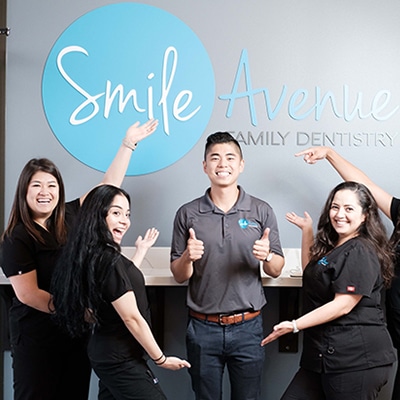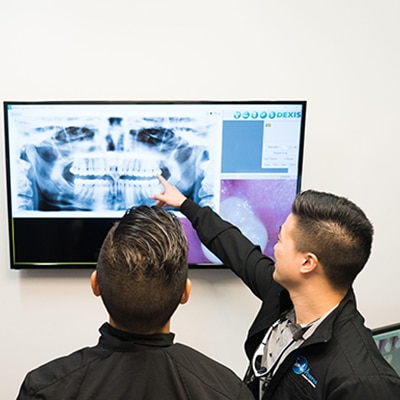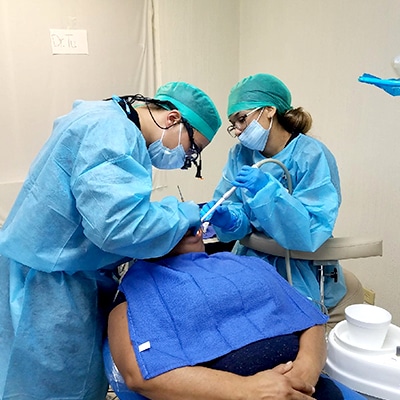
Introduction to Teeth Reshaping: What It Is
Teeth reshaping, also known as dental contouring, is a simple procedure that dentists use to fix minor imperfections in your teeth. Think of it as a quick fix where your dentist can change the shape, length, or surface of one or more teeth. The main goal here is to improve the appearance of your smile, making you more confident. It’s a less invasive option compared to braces or veneers, and it’s generally more affordable. During the procedure, your dentist will carefully remove small amounts of tooth enamel to alter the shape of your teeth. It’s quick, often taking just one session, and it’s painless because it only affects the surface. Perfect for fixing small issues like slightly overlapping teeth, tiny chips, or irregularly shaped teeth. Just remember, it’s for minor adjustments, not major overhauls.
Identifying if You’re a Good Candidate for Teeth Reshaping
Teeth reshaping, also known as dental contouring, is a quick fix for minor imperfections in your teeth, like small chips, uneven lengths, or slight overlaps. Wondering if it’s the right choice for you? Here’s a straightforward way to tell. First, your teeth need to be healthy. If you have cavities, gum disease, or root problems, tackle those issues first. Second, we’re talking minor changes. If your teeth are significantly crooked or have large gaps, you might need more than reshaping. This method is best for small adjustments. Lastly, consider your enamel. Teeth reshaping involves removing a small amount of tooth enamel. If your enamel is already thin, this might not be the best path for you. Talk to your dentist to get the full picture of your dental health and whether teeth reshaping can achieve the results you’re looking for.
The Benefits of Teeth Reshaping
Teeth reshaping, often called dental contouring, has some solid benefits. First, it can greatly improve your smile, making teeth look more uniform. Minor chips? Uneven length? Teeth reshaping can handle that, making a big difference with small changes. Plus, it’s quick. One visit is often all it takes. No long treatments. It’s also on the cheaper side of dental cosmetics. Compared to other procedures, this won’t empty your wallet. And let’s not forget, less pain. No need to dread the dentist, as reshaping comes with minimal discomfort. Lastly, improving teeth alignment through reshaping can actually improve oral health by making teeth easier to clean. All in all, reshaping is worth considering if you want a better smile without the fuss.
Potential Risks and Considerations
When you’re thinking about teeth reshaping, it’s smart to weigh the risks against the benefits. First off, teeth reshaping, also known as dental contouring, is generally safe. But, like with any dental procedure, there are a few potential risks and considerations. Tooth sensitivity can sometimes increase. This happens because reshaping can remove enamel, leaving the tooth more exposed to hot and cold. There’s also a slight chance your tooth might become weaker. Removing too much enamel can make your tooth less sturdy and more prone to breakage. And remember, once enamel is gone, it’s gone for good. You can’t get it back. Plus, not everyone is a good candidate for this. If your teeth are already weak or you have significant dental issues, your dentist might suggest other treatments that are better suited for your situation. So, before diving in, it’s crucial to have a thorough chat with your dentist about whether teeth reshaping is right for you, considering these potential risks and your oral health history.
The Teeth Reshaping Procedure Explained
Teeth reshaping, also known as dental contouring, is a simple procedure intended to fix minor aesthetic teeth issues. Picture this – your dentist acts like a sculptor, but instead of clay, they work on your teeth. They carefully remove small amounts of tooth enamel to alter the shape, length, or surface of one or more teeth. The process usually requires just one visit and is surprisingly painless. Here’s how it goes down: First, the dentist will mark spots on your teeth that need reshaping. Then, using a laser or a fine drill, they sculpt the teeth into a more pleasing shape. After that, they polish your teeth, and voila, the physical transformation is complete. It’s quick, with the entire process often taking less than an hour. Since tooth enamel doesn’t grow back, this procedure needs to be done right. So, it’s crucial to choose a dentist with a steady hand and an eye for aesthetics. Teeth reshaping can make a big difference in your smile without drilling deep into your wallet or involving intense dental procedures.
What to Expect During Recovery
Recovery from teeth reshaping is straightforward with almost no downtime. Since it’s a minimally invasive procedure, you won’t deal with the kind of pain associated with more serious dental work. You might feel some sensitivity in your teeth right after, but it’s nothing a regular over-the-counter pain reliever can’t handle. Remember, the sensitivity is typically short-lived, lasting just a day or two. Most folks get back to their daily routines immediately. There’s no special care needed, but sticking to good oral hygiene practices is always a smart move. Brush gently and keep up with your flossing to maintain those newly contoured teeth in top shape.
Care and Maintenance After Teeth Reshaping
Taking care of your teeth after reshaping isn’t rocket science. It’s all about sticking to basics and being a bit more attentive. First, keep up with brushing and flossing. Do it two times a day, every day. No shortcuts. Remember, those reshaped teeth need to stay clean and free from plaque. Next, don’t skip your dentist appointments. Regular check-ups are your best defense against any unwelcome surprises. Here’s something you might not think about: watch what you chew. Avoid biting down on hard foods or objects—no ice chewing, please. And, if you’re someone who grinds their teeth at night, get a mouthguard. Your dentist can help you with one that fits just right. Lastly, avoid using your teeth as tools. No bottle opening or package tearing. If you stick to these simple rules, your reshaped teeth will thank you by looking good and staying healthy for a long time.
Comparing Teeth Reshaping to Other Dental Procedures
Teeth reshaping stands out because it’s simple and offers quick fixes to minor imperfections, unlike braces or veneers. Think of it more like a minor trim than a complete overhaul. It’s painless mostly and cheaper than getting braces or veneers which can really add up. Reshaping can fix small issues fast, like slight overlaps or uneven teeth, but it’s not a magic fix for bigger problems. Now, braces work wonders for crooked teeth, taking months to years, and they get pricey. Veneers? They give you a perfect smile, hiding stains or damage, but they hit your wallet hard and need replacing every decade or so. Bottom line: if your teeth need a minor touch-up, reshaping is your quick, cost-effective buddy. Major fixes? Braces or veneers are your go-tos, just be ready for the time and cost.
Cost Factors of Teeth Reshaping
Dishing out cash for teeth reshaping hinges on a few things. Generally, you’re looking at a bill that could range from (50 to )300 per tooth. Yeah, the gap is wide, but that’s because it boils down to how much work your pearly whites need. If it’s a minor tweak, you’re leaning towards the lower end. Need more? You’re hitting higher numbers. Location plays a big role too. Living in a high-cost city? Expect to fork out more. And don’t forget the dentist’s experience. A seasoned pro might charge you more, but you’re also likely getting top-notch work. It’s not all about the dough, though. Considering the whole picture helps you figure if the price tags are worth the outcome for your smile.
Making Your Decision: Is Teeth Reshaping Right for You?
Deciding if teeth reshaping is the right move takes a bit of thinking. It’s a procedure that can fix small nicks, uneven tooth length, and minor shape concerns. But it’s not a miracle fix for everyone. First, your teeth need to be healthy. If you’ve got a lot of decay or gum disease, this isn’t for you. And if your teeth issues are big, like major alignment problems, other treatments might be better. Teeth reshaping is quick, often painless, and more affordable than many other cosmetic dental procedures. However, it’s permanent because it involves removing enamel. So, consider your options, talk to a good dentist, and remember, this is about making you confident in your smile. It’s a small change that can make a big difference, but it’s not reversible. Make sure it aligns with your goals and the advice of your dentist.













